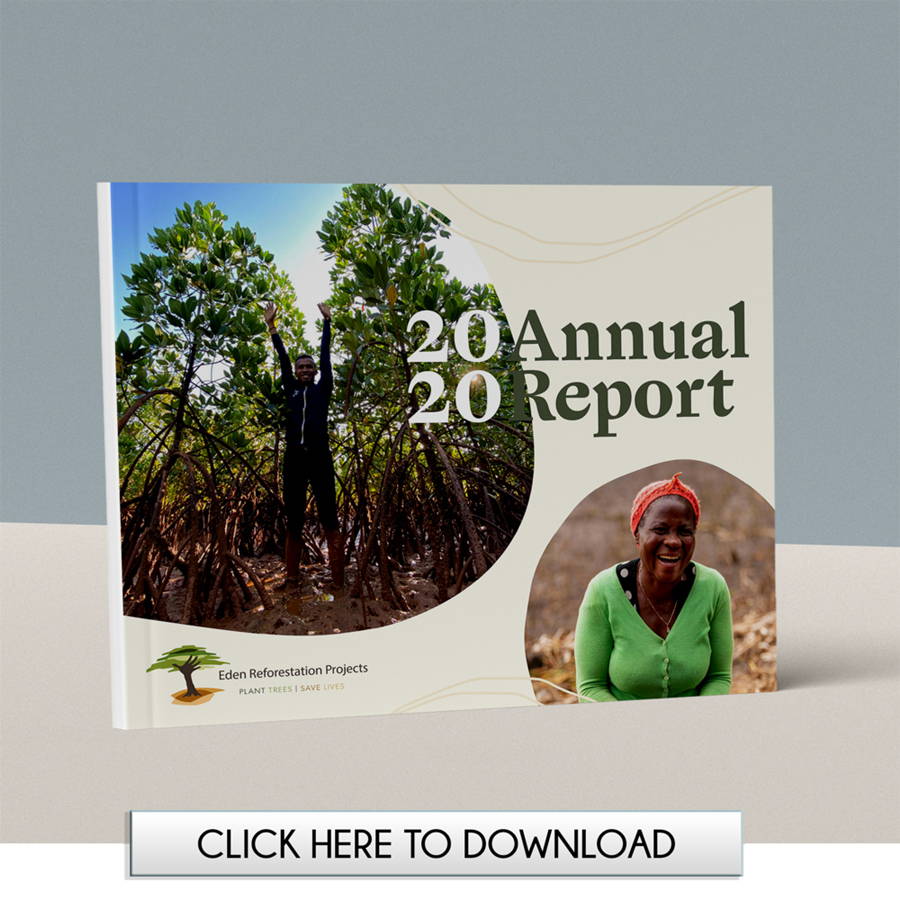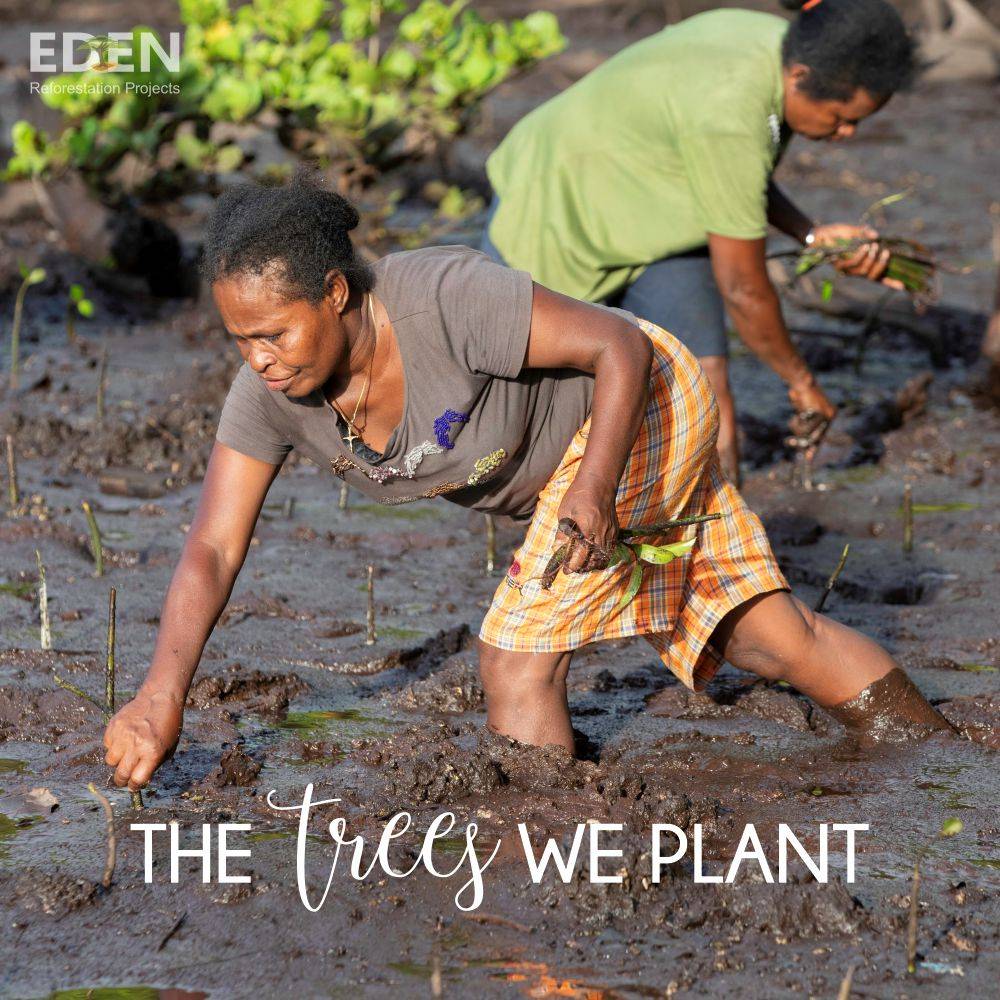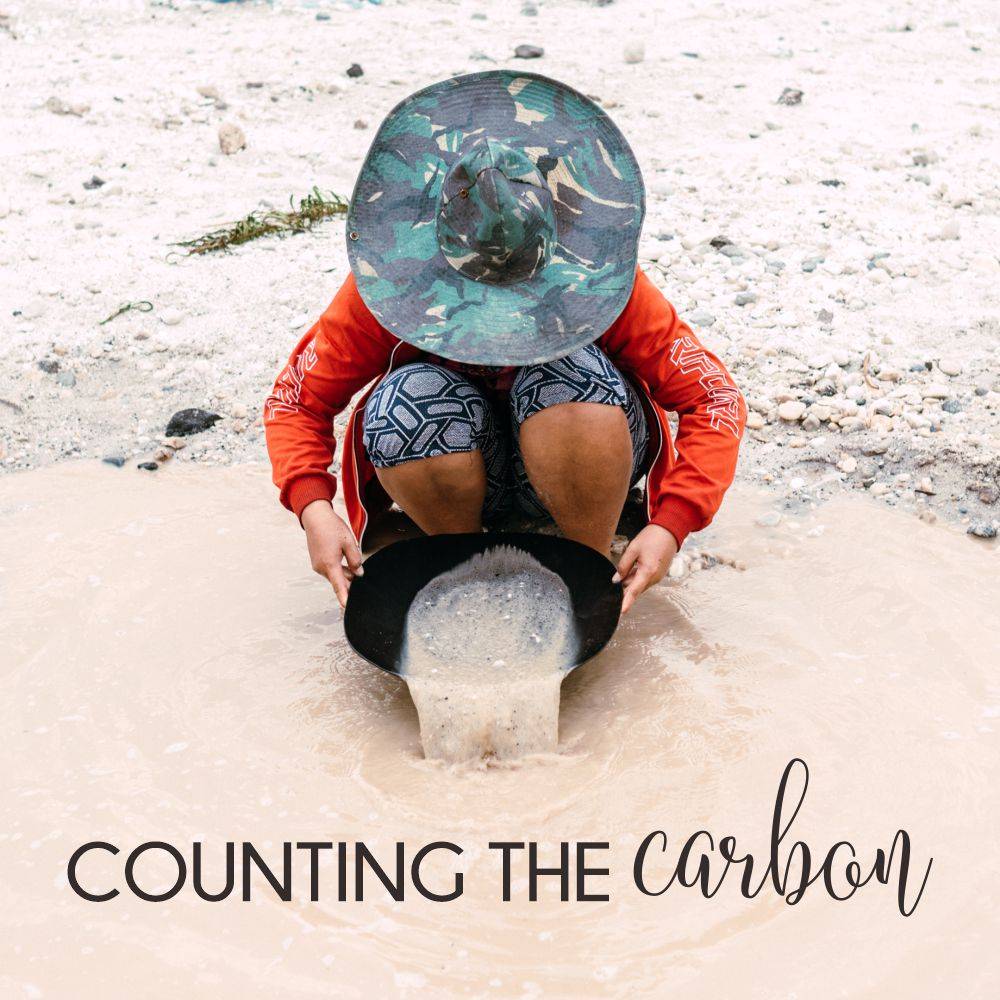Your Cart is Empty
Journey beyond jewelry: the trees we plant
It doesn’t cost much to plant a tree. That’s why we promise you this: every purchase plants five trees. What exactly happens after you hit the ‘shop’ button?
Last year, in addition to offsetting carbonthrough the Katingan Project, we planted trees with the Eden Reforestation Project. With our community, we planted a total of 36,331 trees in Biak, Indonesia and Madagascar. Of these, we planted 12,269 in 2020 alone.
The majority of the trees we planted (and by ‘we’, I mean you) are mangroves, a vital nursery root system in the coastal line, home to juvenile fishes and shrimps, and a protective buffer against tropical storm and coastal erosion.
So, why do we need more mangroves?
In 2020, 25 million mangrove trees are planted in Biak, Indonesia.
The mangrove forest on Biak island, Papua, was devastated by a 7-m tsunami in 1996. Even though it was well over two decades ago, the recovery was slow and the impact is still visible to this day. An estimated 250 million mangrove trees were severely damaged, and replanting these was to be the goal.
Eden came to Biak in 2017 knowing there’s a lot of work to do. What was once a sanctuary for the world’s most diverse mangrove forest, was now a barren mudsoil.
The majority of islanders are subsistence farmers and fishermen, which means they fish minimally, but without regular income. A few “lucky” ones have become local school teachers, although they may go without salary for months.
Planting needs coherent plans, too. Land needs to be properly cleared so new trees can grow healthy. After that, workers will collect propagules in tiny gunnysacks, then count and sort them by species in the nursery. Once its root system is strong enough, it will be planted on the ground.
Mangroves are magical trees connecting the land and the ocean. Their vast root system protects juvenile fish and shrimps from predation, so it’s essential to the health of the ocean. It’s how tiny fish can grow big. Their salty, hardy trunks make a strong timber to build homes. That’s why some hopeful islanders tried to replant mangroves, but with little financial support, it was hard to scale.
Even though mangroves only account for 1% of the world’s forest, they’re one of the top three carbon-capturing ecosystems on Earth. They sequester more CO2 than tropical rainforest.
Mangroves are also extremely resilient. They can tolerate coastal waters and the ebbs and flow of intermittent tides. And the proof of its strength is in the massive amounts of carbon sequestered in the sand and the mud.
But in the last 60 years, 40% of the world’s mangrove forests have been lost, because of coastal development, over-harvesting and to make way for shrimp farms.
What’s more, degraded and destroyed mangroves can be regenerated and restored to full capacity in a remarkably short period of time.
The coastal region of Madagascar also underwent rapid deforestation of its mangrove forest. Without it, the majority of local villagers are competing for a few resources. 90% of the local villagers are relying on the 10%, as it was only the 10% who own fishing nets and boats; and thus the ability to fish and earn money. A bit of a modern slavery happening in their own community, and a harmful cycle of money lending prevents the majority from being financially independent.
Also remember this: the seemingly tiny Madagascar island is actually the world’s fourth largest island. So other than mangroves, a high concentration of endemic, diverse tree and animal species live in this coastal island. Upland in the region is dry deciduous tree forest — one of the world’s richest dry forests with over 800 trees and home to eight lemur species.
Again (*sigh*), this dry forest was turned barren and grassland by fire, uncontrolled grazing, and slash-and-burn agriculture. Every time Eden hears about a patch of land about to be (literally) deserted for human development, their team makes sure to collect the seeds of these endangered trees so they can nurse and replant later.
There are at least hundreds of millions of trees to plant. And who’ll be doing all the work? It’s the local communities themselves. They collect the seeds, attend the nursery, and plant the seedlings. By ensuring the work of tree-planting is being done, they earn steady income. As the land replenishes, so is their livelihood.
Just in 2020, Eden planted nearly 25 million trees in over 16 planting sites in Biak, Indonesia. And in Madagascar, a whopping 145 million trees inover 76 project sites.
So without further ado,
here’s Eden Reforestation Project
in their own words:
1.
How did you choose the regions to join the program? I’m aware about the requirements for local community partners you set, one of which is their genuine interest to improve their ecosystem.
Areas with the highest rate of deforestation are not relative to geographic location but rather to economic well-being. Worldwide, regions which are most impacted by deforestation are often also highly poverty-stricken and underdeveloped as their survival relies on the resources the trees can provide. This results in the cutting down of trees for construction, fuel, heat, and agricultural purposes. The impact is rather dramatic as deforestation causes severe flooding, erosion, and desertification. This vlog and our blog here go into more detail on the process of choosing where to launch a new project nation.
2.
What kind of trees do you plant in these areas?
Our goal is to plant native tree species which belonged in an area initially. As a result, we plant various types of trees at our project sites. Having different tree species in an area increases biodiversity and encourages natural regeneration. To select our trees, we take an in-depth look at the region itself. We research, conduct field surveys, and speak with the local villagers to determine what types of native trees existed. We never plant monoculture forests or introduce species which would be harmful to the environment. All our leaders in the field are also educated in reforestation practices.
To select our trees, we take an in-depth look at the region itself. We research, conduct field surveys, and speak with the local villagers to determine what types of native trees existed.
3.
I’m wondering about the ownership of this land once the trees grow into maturity. Do you plant on public area, government-owned, community-owned or private land? What kind of impact does land tenure have on the community?
Land rights and authority vary from nation to nation. We plant on a mixture of lands: government, tribal, community, and private. Thanks to our in-country staff's hard work, Eden Reforestation Projects has developed deep and respectful relationships within all levels of community and government departments. In every case, Eden Reforestation Projects makes concerted efforts to form written agreements with a clause leading to a perpetual forest.
We begin each restoration project by prioritizing the local community's needs first. Before being hired by Eden, most people working at Eden Reforestation Projects' nurseries and planting sites never had a cash-paying job.
As the land is restored, it begins to provide for them through improved soil for farming, improved fishing due to decreased erosion, and restored and refilled aquifers. Additionally, food security and income increase as Eden's employees further benefit from agroforestry projects and their ability to begin micro-enterprises.
Many of our employees report how their income from Eden has enabled them to purchase their freedom from debt slavery. They can buy boats, fishing equipment, and many now own land. They can afford medication and get medical care when it is needed. They are no longer living day-to-day, and thousands of children who used to work to help their parents make ends meet are now attending school. We have even built two schools in Madagascar to enable children in remote villages to go to school.
4.
If it costs so little to plant trees, what do you think keeps people and businesses from planting trees?
We cannot speak for other businesses, but we do know that reforestation must present a benefit to the local population. Communities suffering from the impact of deforestation are often the same as those living in extreme poverty due to the unsustainable relationship between the land and the people. It is essential to be committed to and work alongside local villages and communities to achieve a successful and longstanding reforestation effort.
At many of our sites, a portion of the trees planted by Eden are agroforestry species (fruit, fodder, and construction species designed to provide food security and benefit legitimate human needs). Over time these trees become a source of sustainable income. We work to supply the local people with alternative fuel sources (fuel-efficient dry wood stoves and solar parabolic stoves), which reduces and or eliminates their dependence on charcoal.
We also hire forest guards as part of the labor force. Forest guards are part of the overall budget. Most significantly, we have seen the locals fall in love with their forest. They also recognize and benefit from the restored forest through an increase in fisheries, improved farming, cleaner water, and the formation of microenterprises
5.
What would be your best tip for those who are trying to plant trees themselves, whether for their own back garden or community garden?
Provided that invasive species are avoided, we just recommend for people to plant as many trees as they can to make the most impact in their area!
Trees are a powerful thing. It’s a manifestation of our hopeful actions over the years. As the seedlings turn into forest over the years, the ecosystem is replenished, jobs flourish, and nearby villages take notes. The environmental and economical impact of tree planting is striking. The reforestation project expands, and so our tree planting journey continues….
* All the images credit to Eden Reforestation Project























